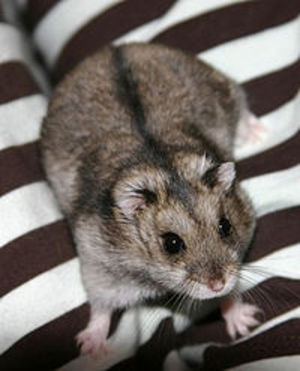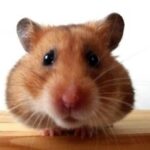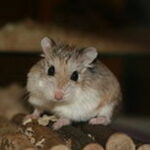These tiny hamsters are known by many names, some of which are longer than the actual hamster. Known as the Campbell’s dwarf, the Siberian dwarf and the Djungarian, they are perhaps best known as the Russian dwarf hamster. They are mostly silvery-grey with a pale belly and throat, but several new colors and patterns are emerging into the pet trade.
But no matter what they are called or what color they are, Russian dwarf hamsters need the same care. It’s best to keep Russian dwarfs only with Russian dwarfs. Although they have been bred with winter whites, these are two separate species. Usually, Russian dwarfs will attack or hide from any other rodent or hamster species.
Temperature
According to Hamsterific.com, wild Russian dwarf hamsters live in Siberia and northern China. They have a series of underground burrows along miles of well-known territory. They dig the burrows so that the average temperature is about 62 degrees Fahrenheit. They do not hibernate but extreme cold will cause them to fall into a coma which may kill them.
Russian dwarf hamsters need a stable temperature and as little humidity as possible. They can over heat and die, so never leave them in a car or trunk of a car (it has happened) or place their cages in direct sunlight. Plastic cages or aquariums will get hot very quickly.
Housing
Russian dwarf hamsters have evolved to run around for miles in search of food. This means that they need a large cage, plenty of toys and opportunities for climbing and digging in order to give a safe outlet to their abundance of energy. They need toys, a wheel and tunnels to climb and peer out of or they will rapidly put on weight and may get diabetes.
Many cages made for Syrian hamsters are not suitable for dwarf hamsters because the smaller rodents can squeeze out of them. In a pinch, a very large 25 gallon plastic storage tub can do, but you’ll need to be sure the hamster can’t jump out of it. There are now tops that can be placed on aquariums so that tunnels, toys or a bridge to another aquarium can be added.
Avoid cheap cedar bedding because cedar oil can cause health problems in dwarf hamsters. Some hamster owners refuse to use pine, unless it is kiln-dried. Aspen wood bedding, Carefresh or other recycled paper material can make good bedding. Avoid commercial hamster nesting material, as Campbell’s are too small to use it without getting tangled up in it.
Food
Russian dwarf hamsters have the exact same diet as a Syrian hamster, but they do have a higher metabolism. Sharon Vanderlip, DVM and author of Dwarf Hamsters (1999) recommends that a mealworm, cooked meat or a tiny piece of cheese be given a couple of times a week to help keep the hamsters rolling along.
Dwarf hamsters will stash whatever food they do not eat right away. Be sure to remove any fresh foods like a tiny piece of broccoli after a couple of hours, because eating spoiled food will get the hamster sick. Remove any stashes of food when you clean the cage out, especially if they have begun to sprout or grow mold.
Foods you should never give your dwarf hamster include onions, avocado, uncooked beans and very sugary foods like cakes, ice cream and cookies. Also avoid any kinds of chocolate, sweet breakfast cereals or human junk food like cheese puffs.
Veterinarian
Ideally, you will want to find a veterinarian experienced with dwarf hamsters before you bring one or more home. There are many veterinary clinics in pet food chain stores. The demand for quality care of pet dwarf hamsters has led to a surge of veterinary advances in small rodent care. Ailments that would have killed a dwarf hamster 20 years ago can often be treated today.
Don’t assume that a hamster is a “disposable” pet. If you are not willing to find a vet for your dwarf hamster, please don’t get one. The hamster will get ill, often sooner rather than later.
Additional References
Training Your Pet Hamster. Gerry Buscis and Barbara Somerville. Barron’s; 2002.
The Hamster Handbook. Patricia Pope Bartlett, et al. Barron’s Educational Series; 2003.
Hamsters. Nancy Ferris, et al. Bow Tie Press; 2008.
Author’s personal experience.






